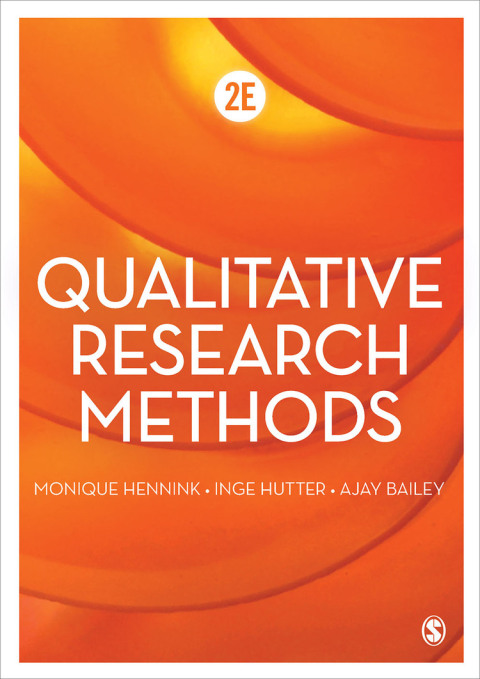Description
Efnisyfirlit
- Cover
- Table of Contents
- Title Page
- Copyright Page
- Dedication Page
- Preface Is this book for me?
- Acknowledgments
- About the Companion Website
- CHAPTER 1: The impact and power of qualitative methods
- Overview and introduction
- Three core qualitative concepts: self‐reflexivity, context, and thick description
- The strengths and distinctions of qualitative research
- Qualitative research is useful in a variety of jobs, settings, and disciplines
- Transforming ideas to sites, settings, and participants
- Moving toward a research question
- Considering collaboration
- In summary
- CHAPTER 2: Entering the conversation of qualitative research
- Phronetic iterative qualitative data analysis (PIQDA)
- A complex focus on the whole
- A sampling of theoretical approaches that commonly use qualitative methods
- Historical matters and current conversations in qualitative research
- In summary
- CHAPTER 3: Paradigmatic reflections and qualitative research genres
- Paradigms: positivist, interpretive, critical, postmodern
- Paradigmatic complexities and intersections
- Key genres of qualitative research
- Case study
- Grounded theory
- Ethnography and ethnography of communication
- Phenomenology
- Participatory action research
- Narrative inquiry and autoethnography
- Creative, performative, and arts‐based approaches
- In summary
- CHAPTER 4: Research design, sampling, research proposals, ethics, and IRB
- Planning the data collection: fieldwork, interviews, texts, and visuals
- Developing a sampling plan: who, what, where, how, and when
- Ethics and institutional review boards (IRB)
- Creating a research proposal
- In summary
- CHAPTER 5: Negotiating access and exploring the scene
- Confessional tales that illustrate common challenges of access and consent
- Practical considerations of negotiating access
- An ethical posture of accessing virtual and digital texts
- Negotiating access for interviews and avoiding imposter participants
- Abandoning the ego, engaging embodiment, embracing liminality
- Navigating those first research interactions
- Exploratory methods
- In summary
- CHAPTER 6: Field roles, fieldnotes, and field focus
- Field roles and standpoints
- Visual, virtual, and digital aspects of fieldwork
- Writing fieldnotes: raw records, headnotes, and formal fieldnotes
- Qualities of good fieldnotes
- Focusing the data and using heuristic devices
- In summary
- CHAPTER 7: Interview planning and design
- Self‐reflexivity in interviews
- Interview structure, type, and stance
- Interview guide and question wording
- Interview questions: types, purposes, examples, and sequencing
- Visual, embodied, and experiential interview approaches
- How many interviews are “enough”?
- In summary
- CHAPTER 8: Interview practice
- Conducting face‐to‐face interviews
- Technologically mediated approaches to interviewing
- The focus‐group interview
- Overcoming common focus group and interviewing challenges
- Transcribing
- In summary
- CHAPTER 9: Phronetic iterative qualitative data analysis (PIQDA)
- Phronetic iterative qualitative data analysis (PIQDA)
- Organizing and preparing the data
- Coding: what it is and how to start
- Analysis technology: manual approaches versus computerized software
- Primary‐cycle coding and first‐level descriptive codes
- Secondary‐cycle coding: second‐level analytic and axial/hierarchical codes
- Focusing the analysis and creating a codebook
- Synthesizing activities: memos, negative cases, and analytic outlines
- PIQDA visual overview and where to go from here
- In summary
- CHAPTER 10: Advanced data analysis
- Advanced tools for data analysis: visual displays and QDAS
- Exemplars and vignettes
- Developing typologies
- Narrative analysis and dramatistic strategy
- Metaphor analysis
- Explanation and causality
- Discourse tracing
- A post‐qualitative analysis: deconstructionism and arts‐based research
- In summary
- CHAPTER 11: A big tent model of qualitative quality
- Combatting positivism creep: moving beyond objectivity, reliability, and formal generalizability
- Eight “big tent” criteria for high‐quality qualitative research
- Worthy topic
- Rich rigor
- Sincerity
- Credibility
- Resonance
- Significant contribution
- Ethical research practice
- Meaningful coherence
- In summary
- CHAPTER 12: Theorizing and writing
- Theorizing, brainstorming, explaining
- Types of tales: realist, impressionistic/poetic, confessional/autoethnographic
- Key puzzle pieces of a qualitative essay
- Findings and analysis: choosing an organizational approach
- Implications, conclusions, limitations, and future directions
- In summary
- CHAPTER 13: Drafting, polishing, and publishing
- Writing as a method of inquiry
- How to write and format qualitative research
- Setting yourself up for success by considering the audience first
- Submitting, revising, and resubmitting for journal publication
- Writing as practice: creating good habits and overcoming challenges
- In summary
- CHAPTER 14: Qualitative methodology matters
- Navigating exit and research disengagement
- Ethically delivering the findings
- Public scholarship: crafting representations that move beyond the scholarly essay
- Warning: doing research that matters can be terrifying
- Overcoming lingering obstacles to public scholarship
- In summary
- Appendix A
- Appendix B
- Appendix C
- References
- Index
- End User License Agreement







Reviews
There are no reviews yet.